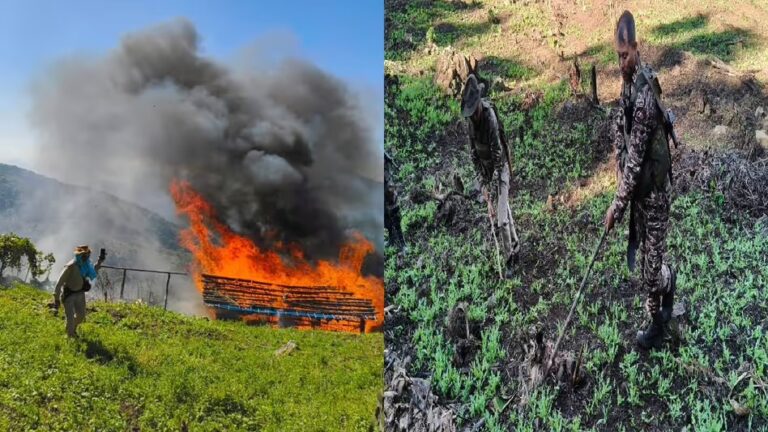NIA Nabs Manipur Riots Suspect in Kerala: What It Means for India’s Ethnic Flashpoint
Quick-Read News Summary
The National Investigation Agency (NIA) on May 16, 2025 arrested 21-year-old Rajkumar Maipaksana of Imphal from a hotel in Thalassery, Kerala. Traced through days of covert surveillance, he was picked up without resistance on charges linked to the 2023-2025 Manipur ethnic violence. Investigators allege he received arms training from the banned United National Liberation Front (UNLF) and played a role in fomenting riots that have left the northeastern state on edge for two years.
1. Why This Arrest Matters
Picture India’s northeast as a simmering cauldron where identity, land, and politics bubble nonstop. Into that mix walks the NIA, India’s premier terror-crime agency, hauling away a 21-year-old who allegedly swapped textbooks for boot-camp drills. His capture is more than a headline; it’s a litmus test of New Delhi’s ability to choke insurgent lifelines that stretch from hill hamlets to coastal tourist hubs.
From Imphal to Thalassery: A Man on the Run
- Fake day jobs: Sources say Maipaksana hopped gigs—construction in Bengaluru, housekeeping in Kerala—keeping wages low and anonymity high.
- Digital dust: Investigators matched a distinctive neck-tattoo from Facebook photos to hotel-staff records, then posed as health inspectors to flush him out.
- Why Kerala? Cheap migrant hostels, bustling coastal trade, and minimal community scrutiny make it a magnet for fugitives flying below the radar.
Think of it like switching Wi-Fi networks; the more often you hop, the harder it is for trackers to lock on.
UNLF & The Militant Recruitment Pipeline
The United National Liberation Front—once soaked in Marxist rhetoric, now trafficking in extortion and narcotics—spies fertile ground among disillusioned valley youth. Training camps reportedly sit across the porous India-Myanmar border. Recruits get 10-day crash courses in small-arms handling, IED assembly, and social-media propaganda—cheaper than a semester of college, deadlier than a semester of ROTC.
Kerala’s Quiet Corners: Safe Haven or Soft Target?
Kerala is no stranger to off-grid operatives—from IS returnees in Kannur to Maoist couriers in Wayanad. What makes the state simultaneously secure and vulnerable?
- High literacy: Forgers create believable résumés and certificates.
- Gulf money: Cash inflow masks illicit micro-funding.
- Tourist churn: Faces blur in the crowd faster than you can say “God’s Own Country.”
Legal Roadmap: What Awaits Maipaksana
- Primary charges: Unlawful Activities (Prevention) Act, rioting, criminal conspiracy, arms trafficking.
- Possible sentence: Up to life imprisonment; bail is a long shot under UAPA.
- Trial venue wrinkle: NIA courts often shift trials out of conflict zones to avoid jury intimidation, meaning he may stand trial in Guwahati or Delhi.
- Timeline guess: Framing of charges in 90 days, trial in 18-24 months if no adjournment circus unfolds.
Impact on Ground Zero: Manipur’s Tense Calm
Residents in Imphal whisper relief mixed with paranoia. For every arrest, rumors claim “ten more slipped away.” Security forces may tout progress, but displaced families camping in relief centres still crave safe roads, open schools, and working ATMs—not just press statements.
Broader Security Takeaways for India
- Migration monitoring: States receiving heavy migrant inflows need joint intel cells to vet newcomers without racial profiling.
- Border blitz: Plug the Myanmar gaps with smart fencing, drones, and tribal liaison teams.
- Cyber dragnet: Dark-web weapons marketplaces increasingly list Northeast routes; AI-powered scraping tools can flag suspicious bulk buys of detonators or ammonium nitrate.
Can Peace Return? Practical Solutions & Policy Picks
- Truth-and-Reconciliation Commissions modeled on South Africa’s post-apartheid era could air grievances publicly.
- Land-use tribunals staffed by equal Meitei-Kuki representation might settle hill-valley disputes faster than court backlogs.
- Youth-skill vouchers: Offer ₹50,000 micro-grants for coding bootcamps or agri-startups to teenagers in hotspot villages—detours from the insurgent conveyor belt.
Final Thoughts: A Cautionary Tale
Maipaksana’s story reads like a screenplay—young man flees burning hometown, gets seduced by militancy, then hides in plain sight flipping hotel bedsheets. But the moral bites deeper: conflict is portable. Until India stitches shut the seams—both geographic and social—violence will keep leaking from one region to another like water through bamboo walls.
FAQs
- How did the NIA locate Maipaksana so far from Manipur?
Digital surveillance, biometric clues, and undercover fieldwork led agents to his Kerala hideout. - Is the UNLF still active?
Yes, though splintered. It funds itself via extortion, cross-border narcotics, and alleged crypto donations from sympathizers abroad. - Why didn’t Kerala Police make the arrest?
NIA sometimes runs “zero-leak” ops in sensitive cases to avoid tip-offs, informing local police post-facto. - Could this arrest trigger retaliation in Manipur?
Security analysts warn of sporadic flash protests, but heavy troop deployment and surveillance may keep a lid on large-scale unrest. - What can ordinary citizens do to help?
Report suspicious identity documents, avoid rumor-mongering on social media, and support verified relief funds aiding displaced families.


